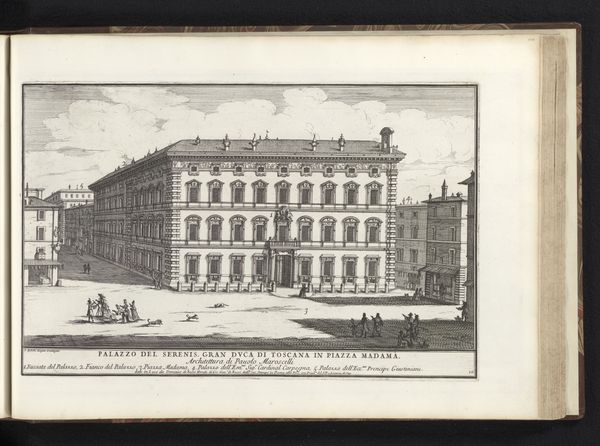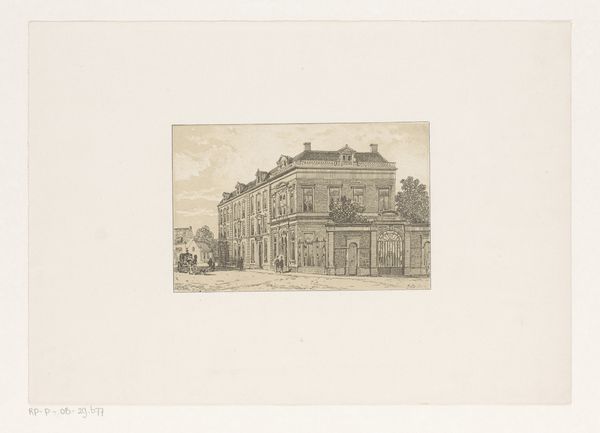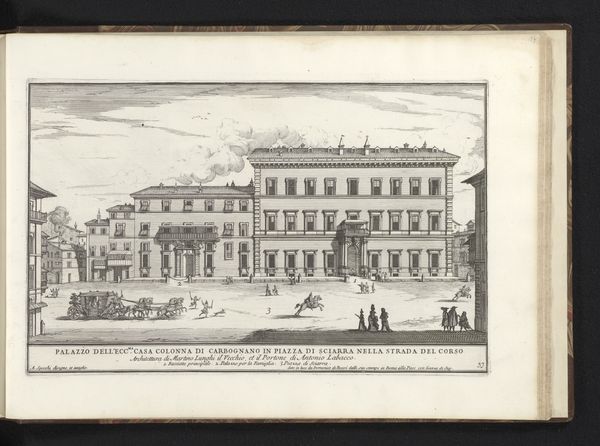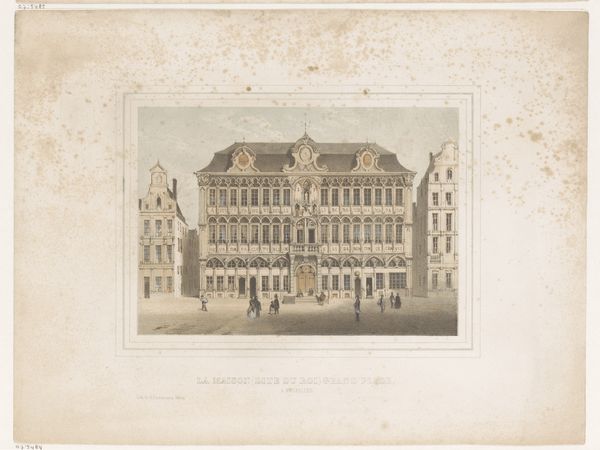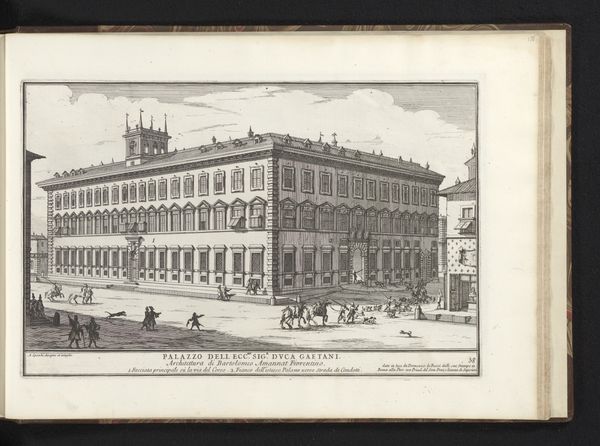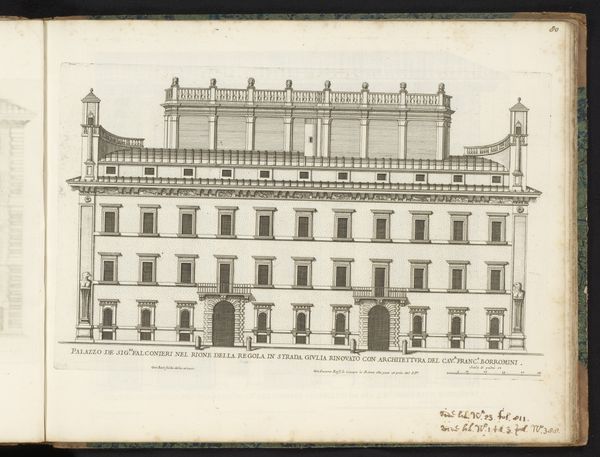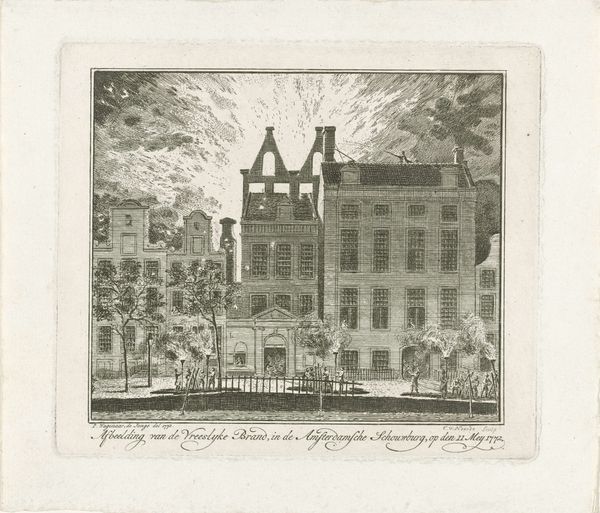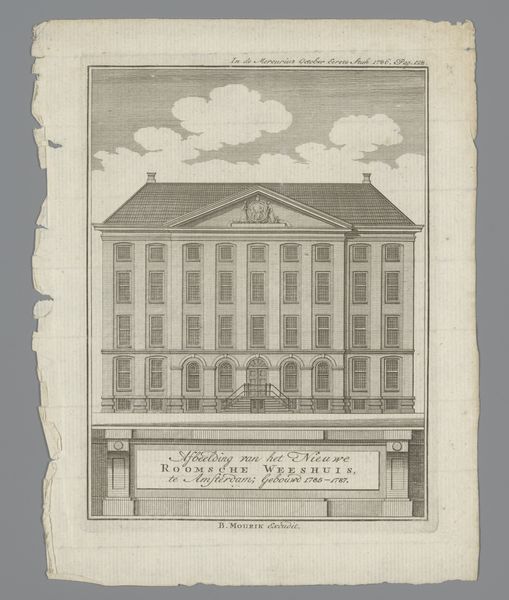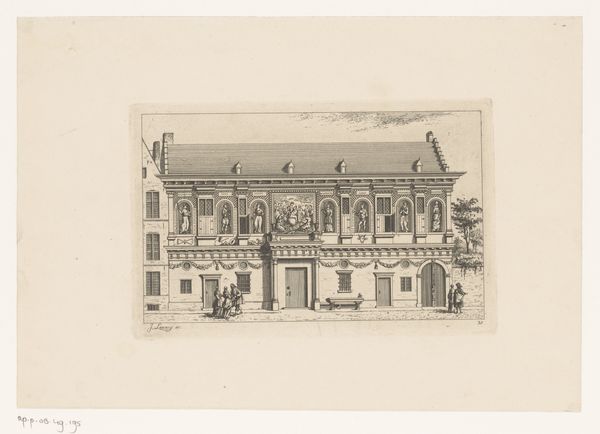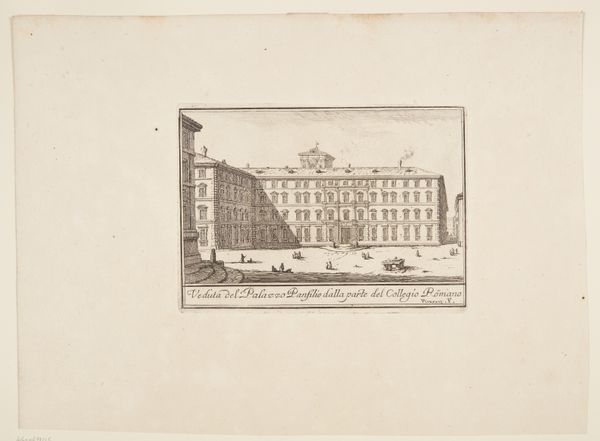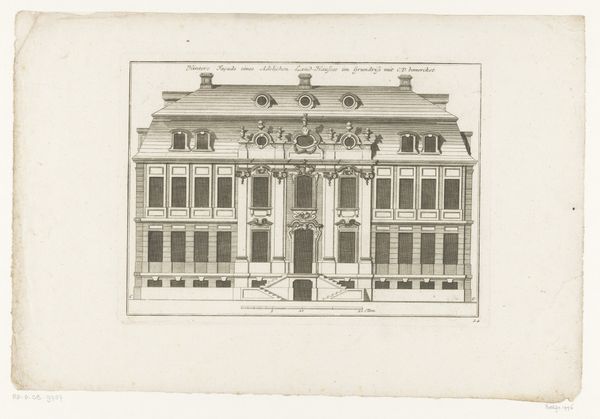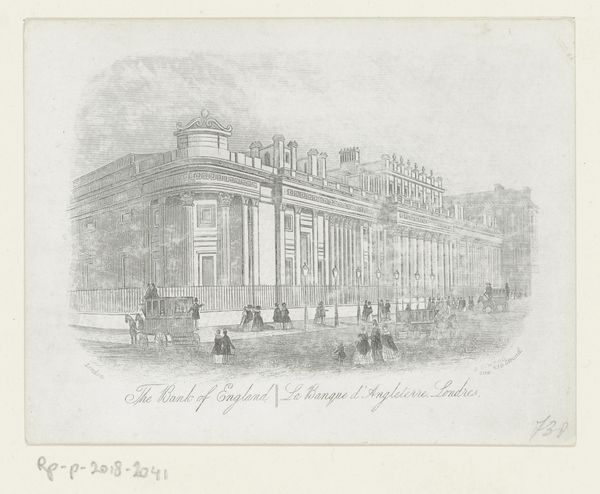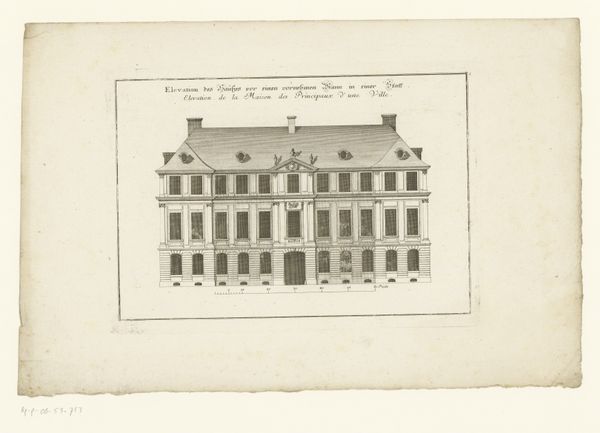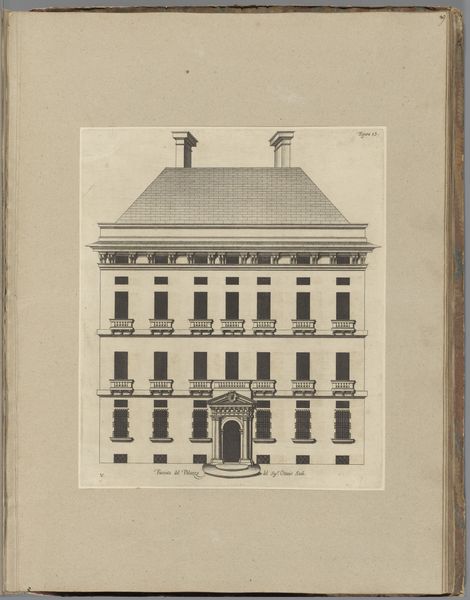
drawing, paper
#
drawing
#
16_19th-century
#
paper
#
cityscape
#
street
#
realism
Dimensions: height 74 mm, width 104 mm
Copyright: Rijks Museum: Open Domain
Curator: We are standing before Isaac Weissenbruch's "Facades in a City," a drawing rendered sometime between 1836 and 1912, held here at the Rijksmuseum. Editor: The sheer volume of meticulously inscribed lines arrests me. What seems initially like a conventional facade study possesses a kind of kinetic tension—almost a suppressed liveliness threatening to break the very grid it inhabits. Curator: Yes, this work sits comfortably within the realism movement. Observe Weissenbruch’s choice to depict the urban environment and the architectural style prevalent at the time. The drawing captures a moment in the city's ever-evolving landscape, demonstrating the period's focus on accurate, representational art. Editor: Indeed, however, I am taken by the intricate deployment of light and shadow. Note how Weissenbruch utilizes linear hatching to craft form. See the delicate variations across each window pane or each fluted column? This reveals more than just realism; it explores light's ability to give dimensionality to fundamentally planar structures. The work transcends being just a portrait of facades—it turns out to be more about how we perceive spatial architecture and mass. Curator: Precisely. We cannot also ignore that the composition of architectural sketches like these played an essential role in urban planning and documenting architectural heritage in a rapidly industrializing world. These served to legitimize and often promote imperial architectural principles. Editor: On a semiotic level, the windows resonate, offering potential glimpses beyond surface and structure, promising deeper reflections beyond bricks and mortar. The interplay among these vertical lines, framed inside their horizontal bounds, makes me think about boundaries—or the possible dissolving of borders separating observer from environment, observer from observing. Curator: I hadn't considered that level of structural metaphor at play, though it certainly complements the work's socio-historical function within that context. Editor: Agreed; this piece is rich—perhaps revealing more than first meets the eye in ways both art historically and architecturally profound. Curator: A fitting culmination, and an approach that allows one to consider art within, and outside, established historical structures.
Comments
No comments
Be the first to comment and join the conversation on the ultimate creative platform.
